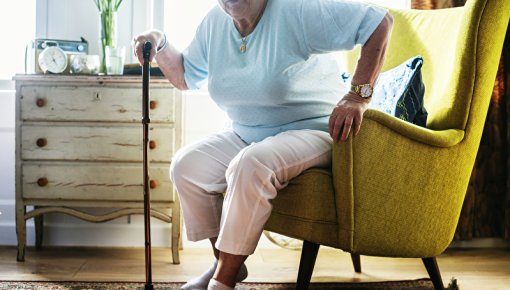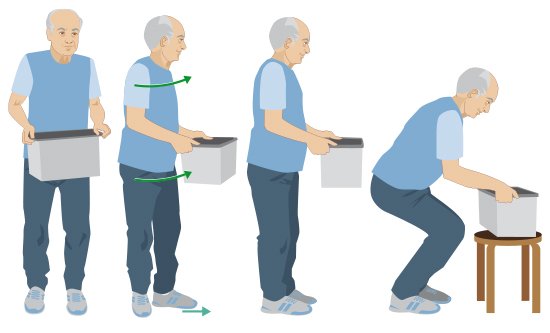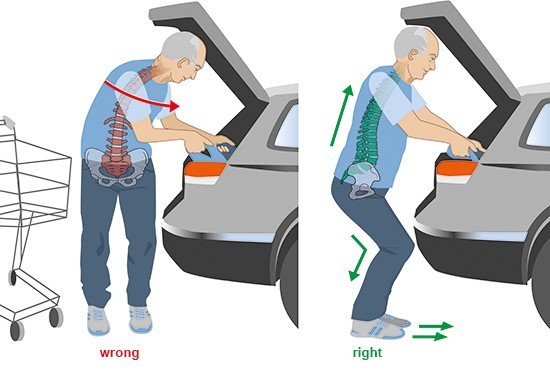Preventing spinal bone fractures in everyday life

If you've already fractured a vertebra (spinal bone) in the past, you have an increased risk of it happening again. There are many things you can do to prevent further vertebral fractures – like moving in a back-friendly way, for instance.
Wrist and hip fractures are usually caused by falls. In people with osteoporosis, spinal bones can already fracture during everyday activities if too much strain or unusual strain is put on them. If you have osteoporosis of the spine, it is a good idea to make sure you move and hold your body in a back-friendly way wherever possible.
Three types of movement in particular can cause vertebral fractures:
- Lifting and carrying things that are too heavy
- Bending the spine too much
- Twisting the spine too far
With just a little care, you can avoid making these kinds of movements in everyday life. For example, you can take the strain off your spine by lifting and carrying objects in a certain way. It is best to completely avoid doing things like moving furniture or carrying heavy objects.


